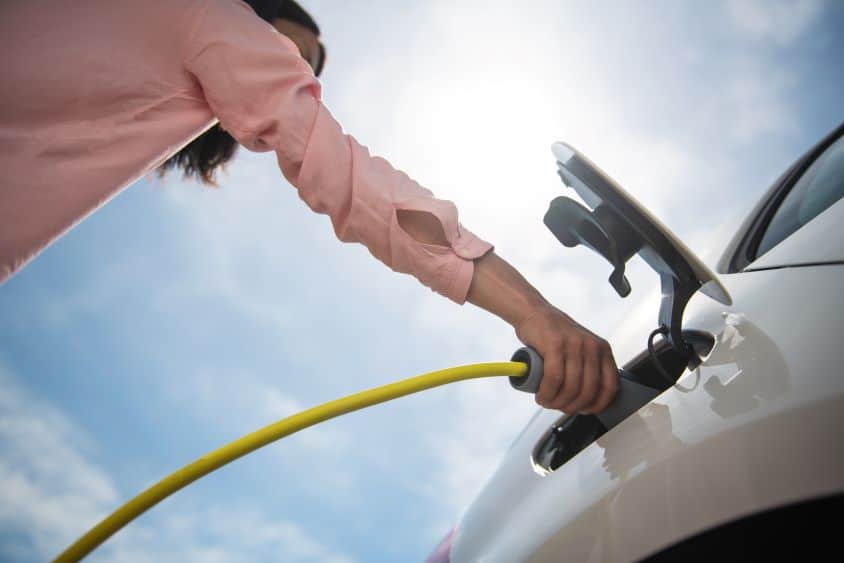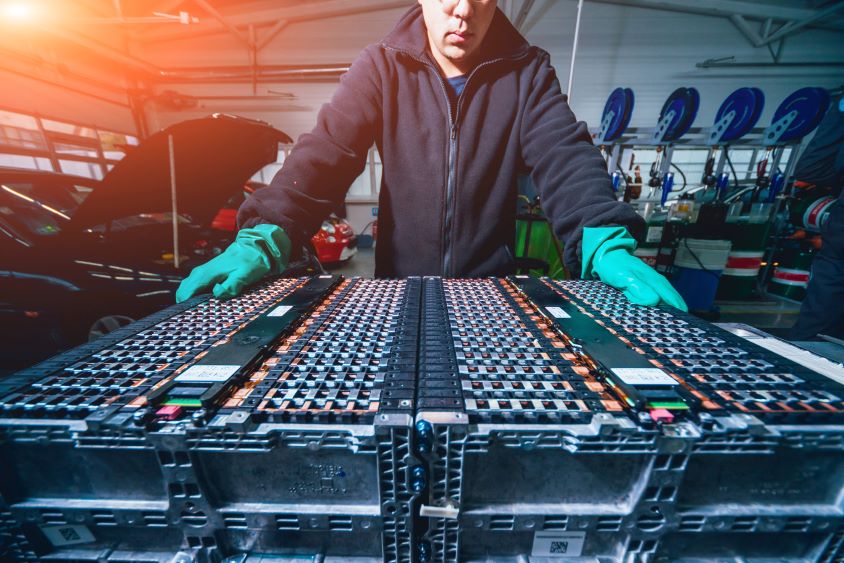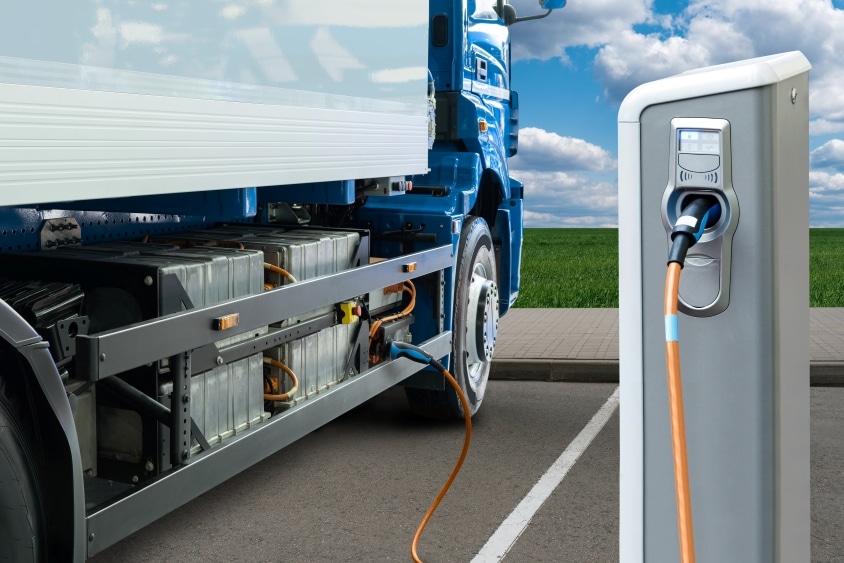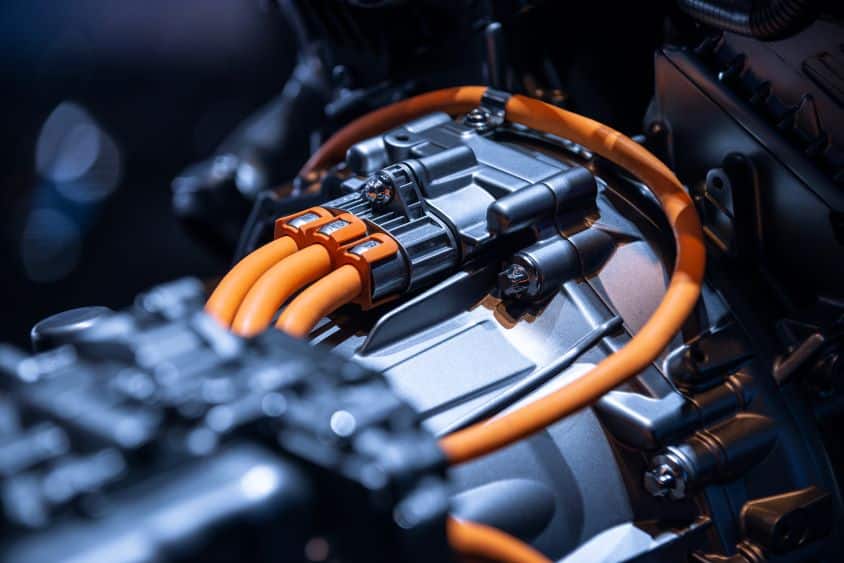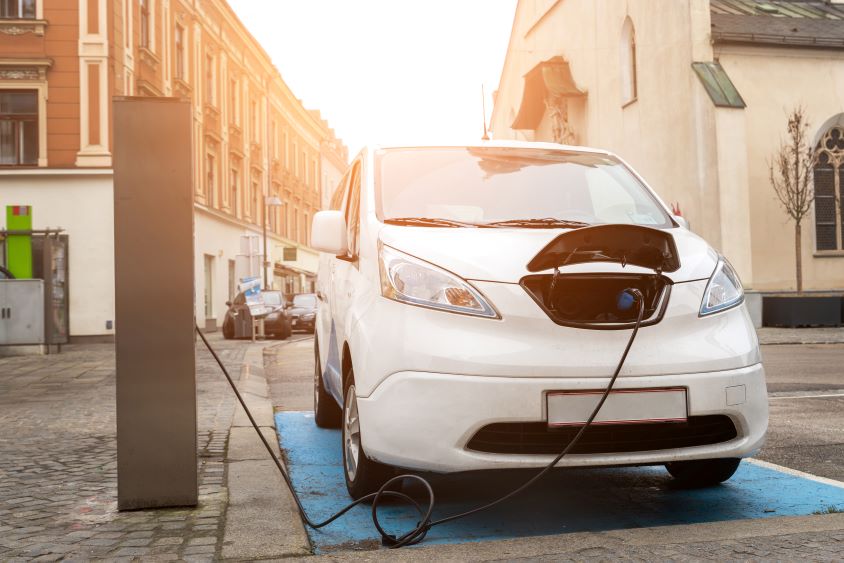As we see more and more electric vehicles hitting UK roads, it’s no surprise to also see an increase in the number of questions asked around these vehicles, and the volume of myths entering the marketplace. From the true carbon footprint of electric vehicles to their distance capability, there is a lot of misinformation to be found – and we want to clear up the narrative on electric vehicles.
In this blog we’ll address some of the most common misconceptions and myths about electric cars, vans and other EVs, from costs to capabilities, in the hope that consumers and businesses looking to purchase EVs can do so while armed with the truth.
Common EV Myths
1. There are no long range electric cars.
One of the biggest pieces of misinformation you’ll commonly encounter is that electric vehicles are not capable of covering long distances, making them impractical for anything other than short journeys. This simply isn’t the case.
Technological advancements have seen the range of EVs on a single charge increase from 29-38 miles back in 2001, to as many as 520 miles in 2022. The advancement in range has been picking up pace in the last five years in particular, and most new electric cars offer at least 200 miles in range as standard.
For those interested in electric vans or heavier duty vehicles, there has similarly been rapid enough technological advancement that these large and often heavier vehicles are keeping pace with their smaller electric counterparts.
If you’d like to learn more about the electrification of delivery vehicles, you can read our blog on Last Mile EVs.
2. Electric cars are more expensive than gas cars.
Those who believe that electric vehicles are more expensive than combustion engine vehicles make the mistake of looking exclusively at the initial purchasing cost of EVs rather than cost over time. Whilst it is true that generally electric cars have a higher upfront cost, they often work out to be cheaper than petrol and diesel cars in the long run, especially if the vehicle is in frequent use.
Buying second-hand EVs is also a great way to knock the price down. It can be easy to overgeneralise the EV market as being occupied by expensive Teslas and Lucid Airs that cost a pretty penny, but there are a host of great EV models available for lower budgets. Buying these second-hand can knock the price down even further. If you are looking to bring more EVs to your company fleet, then leasing or buying electric cars or other vehicles that are a couple of years old can really increase the affordability of the switch.
It’s also important to be aware of the range of government grants and schemes available to help cover the cost of EVs and EV infrastructure, both for personal use and for businesses to capitalise on. For instance, the Workplace Charging Scheme offers businesses and organisations a grant that can reduce the cost of installing EV charge points by as much as 75%, helping to reduce the cost of an EV fleet even further.
3. There aren’t enough electric charging points.
For any driver, being able to refuel (or recharge) when needed is an important part of trip planning, but it’s a misconception that this must be harder for EV drivers. Since September of 2022 there are 34,860 charging points at 20,888 locations across the UK, a rise of 35% since 2021 and a number that is on the rise. Not only that but the number of rapid and ultra-rapid charge points is increasing too, with 6,411 devices at 3,736 locations, a 76% increase on the previous year.
Planning may still be necessary for long trips and until rapid charging points are the standard then there is still a time discrepancy for refuelling between electric vehicles and combustion vehicles. Nonetheless, EV drivers won’t be suffering from lack of charging locations moving into 2023 – especially with the increase in at-home charging options available in market.
4. The National Grid can’t accommodate the increase in EV charging
There is some concern that switching from petrol and diesel vehicles to electric is something that the grid can’t support; a higher level of electrical demand that can’t be met. While the energy crisis of 2022 may add fuel to the fire here, the fact is that this is nothing more than a myth.
Most of our day-to-day devices, like washing machines and computers, are becoming increasingly energy efficient, and what this ultimately translates to is less pressure on our electric grid. Even if we were to collectively make the switch to electric vehicles in an instant, the grid would still be able to manage the demand.
Luckily, the National Grid doesn’t need to worry about such a sudden shift occurring. With years of steady improvement and gradual adoption of electric vehicles, there is plenty of time for the grid system to adapt in an effectively and efficient incremental fashion.
5. You can’t recycle electric vehicle batteries
Electric car batteries are actually highly reusable and recyclable. Over time the power capacity of EV batteries decreases, meaning they are unable to offer reliable power, nor can they move the car as far. At this point an electric vehicle battery needs replacing but the old battery needn’t end up in landfill.
Despite no longer being suitable for powering an electric vehicle, there remains many uses for these batteries. The lithium batteries used in electric cars are likely to retain as much as two third of their usable energy storage even after their life in the vehicle has come to an end. These batteries can then be used as static battery energy storage systems for solar panels, for example.
Many manufacturers of EVs are also have various recycling and re-usage schemes in place to ensure fewer EV batteries end up in landfill. Nissan launched xStorage in 2016 which repurposes batteries from the Nissan Leaf as storage systems for homes and for businesses.
Whilst there is a way to go within EV battery recycling, there is plenty of progress being made at present – and with electric cars growing in number on our roads, there is great incentive to develop and optimise EV battery recycling.
6. EVs have a bigger carbon footprint than gas vehicles
There has been speculation over the real carbon footprint of EVs with claims that high CO2 emissions from their production and the production of the electricity needed to power them makes this eco transport less green than it seems. One study suggested that the CO2 output from EV production is as much as 59% higher than the production of combustion vehicles.
In reality, electric cars and other vehicles have lower ‘well to wheel’ emissions. This measurement of a vehicle’s emission takes in to account the emissions related to extraction and refinement of fuels and the emissions associated with generating the electricity that power them. On average, the ‘well to wheel’ emissions of EVs are less than half that of diesel and petrol vehicles.
Whilst it remains the case that the production of EVs still need improvement to reduce the carbon output, the low carbon output of electric vehicles once in motion means that the initial footprint will be counteracted the longer the electric vehicles is used. This is also likely to further improve as we move more towards renewable energy resources too.
Discover more about electric vehicles with Fuel Card Services
There are many electric car myths in circulation, and it can be hard to know where to go for up to date and honest insights into the world of electric vehicles. To help bring commercial fleet operators up to speed with the latest information on electric vehicles, EV charging and electric fleet news, then our new Electric Vehicle Hub is the place.
Find everything you need to know about electrifying your commercial fleet, with insight into money saving tips and tricks, and a variety of EV charge cards to help keep your EVs in motion at the best price.
If you don’t know what sort of charge card suits your fleet’s needs, read our EV charge cards guide for a step-by-step walkthrough that can help you determine which electric card could help your business.

